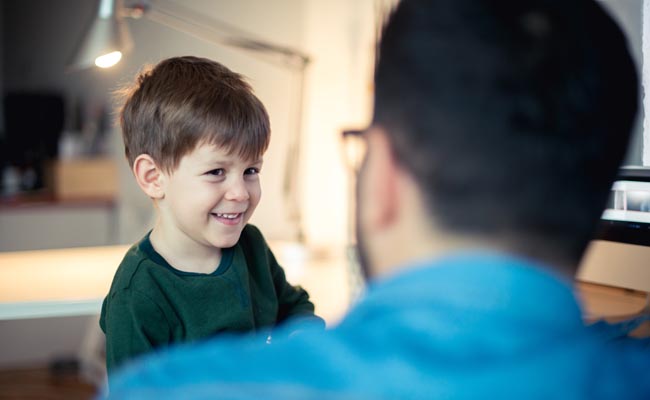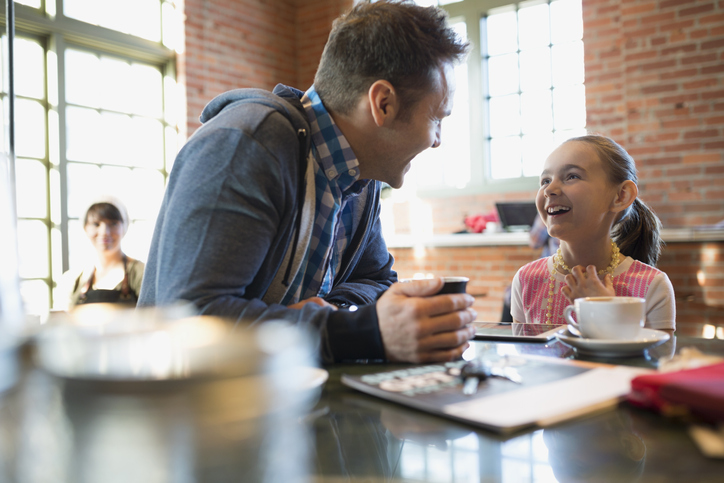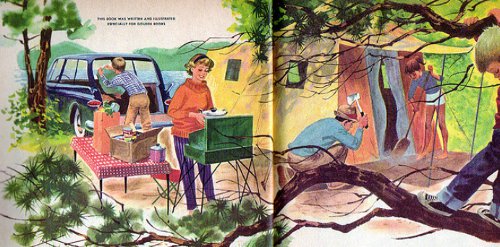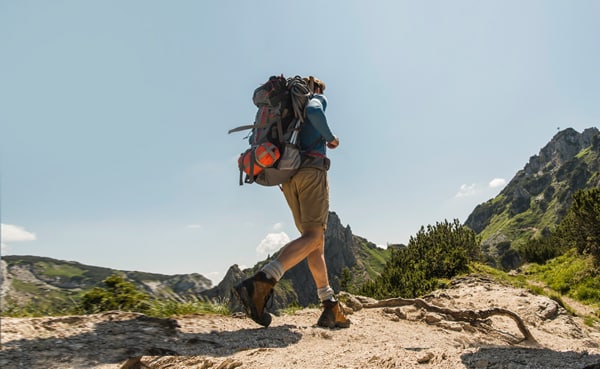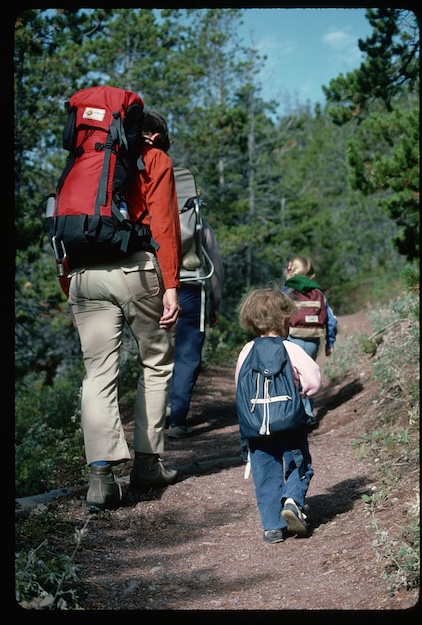
Last year, we wrote a guide to how to take your first backpacking trip, offering a complete primer for getting out there, even if you’re a little intimidated by the idea.
If going backpacking seems daunting when it will just be adults, the thought of bringing kids along can make it feel doubly so.
How far are the kids capable of hiking?
Are they just going to whine and ask “How much further?” the entire time?
How do you pack in a bunch of gear for humans who might not be able to carry their own stuff?
To get the lowdown on how to successfully execute a family backpacking trip with the smaller set in tow, I talked to our friend McKenzie Smith. McKenzie and her husband take their six kids — who currently range in age from 5 to 14 — on half a dozen backpacking trips a year. They’ve successfully executed a 40-mile backpacking trip with all their kids with nary a complaint. McKenzie has even taken all six of her children backpacking by herself, including when her youngest was two and her oldest was eleven. To say that she’s a pro at backpacking with kids is an understatement.
If you’ve ever wanted to try backpacking with your children — or have tried but it felt chaotic or overwhelming — this guide will walk you through what to know before the hike, with advice straight from a seasoned trail parent who’s logged hundreds of family miles.
Why Take Your Kids Backpacking?
Modern parenting tends to err on the side of bubble-wrapped safety and optimized schedules. But deep in the backcountry, both parents and kids discover qualities in themselves they wouldn’t otherwise get acquainted with.
“I just really believe in it,” McKenzie said of backpacking. “Backpacking really builds character. We’ve been on some very challenging trips, and our kids reference them whenever they’re doing something really hard. They’ll say, ‘We did that 40-miler, Mom. We can do this!’ It’s such a confidence-builder for them.”
Beyond building strength and character, McKenzie sees backpacking as one of the most powerful ways to connect as a family.
“Some of our very best memories have come from backpacking. The kids remember these trips more than anything else we do.”
When to Start
McKenzie advocates for not putting your outdoor adventures on hold while your kids are babies, and the Smiths have taken all of their kids hiking while they were still infants. “Our youngest went on his first trip at four months,” she related. “We used the Osprey Poco Plus. It’s a baby carrier that has storage space so you can pack some gear. We just carried him. It was simple.” (If you’re looking for advice on backpacking with a baby, check out this guide.)
That said, it’s understandable that many might find the idea of taking a baby backpacking intimidating. In which case, wait to take your children along until the youngest can walk most of the way or until the age they seem ready, realizing that it might be a lot earlier than you’d think.
Something McKenzie emphasized is that kids can hike longer than you’d expect.
“Our four-year-old hiked 40 miles the year I turned 40,” she said. “Kids are so much more capable than we give them credit for.”
If you’re nervous about sleeping on the ground with your little kids, McKenzie suggests easing into it. “There are places out West with hike-in cabins and fire lookouts. You still carry your gear, but you get four walls and a roof. It’s a great way to start.”
From my experience, if you’re new to backpacking yourselves, it’s best for Mom and Dad to get a few trips under their own belts, before they bring their kids along. There’s a learning curve to backpacking, and you don’t want to be figuring it out while the complexities are compounded by your children. Gain some confidence in your own backpacking skills first, and then have your kids join you.
Choosing the Right Trail
If it’s your first time going backpacking with your kids, McKenzie suggests being thoughtful about the trail you pick.
A first backpacking route in the 3–5 mile range is a sweet spot. “You want it to be a challenge,” she said. “Enough that they feel like they accomplished something.”
You can scale things up or down, depending on how old your kids are. We took our kids on their first backpacking trip when they were eight and eleven and did an 8-mile trail — hiking in 4 miles, camping overnight, and hiking out 4 miles in the morning — and it was very doable and just the right amount to get their feet wet.
When choosing a trail, McKenzie notes, elevation is a bigger factor than mileage. “A five-mile trail with 4,000 feet of gain? That’s brutal for anyone, let alone a kid.”
Flat or rolling terrain, shaded sections, and trails with a destination — a lake, a waterfall, a lookout — go a long way in keeping kids motivated.
Here’s McKenzie’s quick checklist for picking a kid-friendly route:
- Elevation gain: “Under 2,000 feet is going to be a happier hike.”
- Natural hazards: Avoid scrambles, cliffs, and fast-moving rivers.
- Water sources: Critical for hydration and a huge morale booster. “The kids love playing in creeks or lakes. And filtering water is just necessary — you can’t carry enough when you’ve got a bunch of kids.”
- Shade: Makes a big difference in comfort.
As to whether you should choose an out-and-back trail versus a loop, while loops can make the trek feel more varied, only considering loop trails will limit your options. “Out-and-backs still feel different depending on the time of day, weather, and what wildlife you see,” McKenzie says.
Gear: What Kids Need (and What They Don’t)
Backpacking gear can be expensive and will quickly be outgrown by still-developing kids, which is another reason parents might hesitate to include their children in this pastime. Also, if a kid isn’t old enough to carry their own gear, it means you’ve got to shoulder more equipment, which increases the effort level for you.
McKenzie has some solid advice on outfitting your children for a trip so that it doesn’t break the bank or your back.
“Until our kids are around 7 or 8, they don’t carry much,” McKenzie said. “They just use a really lightweight daypack, and we have them carry light stuff like our freeze-dried meals or the trash bag out.”
If your kids are little, McKenzie recommends opting for gear that you can share with your kids. For example, instead of giving each person their own air pad, use a double sleeping pad. “We use the Exped Duo to cover the whole tent floor. It’s more comfortable and means fewer individual pads to pack,” McKenzie told me. She’s also a big fan of backpacking quilts over sleeping bags. You can share them, and they’re lighter than traditional sleeping bags.
Once a child proves they’re committed to backpacking, the Smiths will reward them with their own gear. “We’ll buy them their own hiking-specific pack when they’re around eight,” McKenzie said. “And as a reward for a tough hike, my husband will take them to pick out a new piece of gear — a knife, a filter, whatever. It builds ownership.”
If you’re just testing the waters with family backpacking, and you want to minimize costs before fully committing to it, try to borrow gear from friends. Or check out REI and university outdoor programs, as both have rental options. Facebook Marketplace will also be your friend if you want to keep costs down while acquiring backpacking equipment for your kids.
As to hiking footwear, McKenzie recommends trail sneakers over full-on hiking boots for both kids and adults. And make sure to bring a pair of Tevas the kids can wear around camp to give their little feet a rest (they’ll also come in handy if the family needs to cross a stream or just wants to play in it).
Food on the Trail
When it comes to food, simplicity is king.
The Smiths primarily use freeze-dried meals. They can be expensive, though, and some cost-friendly meals their family has also enjoyed over the years include bulk freeze-dried refried beans and tortillas for bean burritos and instant pudding and bulk freeze-dried fruit for dessert. They also bring ramen.
McKenzie told me they typically have two large sit-down meals: one in the morning so the kids have full tummies for the day and one at night before bedding down.
During the day, they’ll snack on trail mix. “They make their own mix before the trip — M&Ms, nuts, dried fruit — and they carry it themselves. They love it.”
One underrated trick? Flavor packets. “Creek water can taste kind of funky, and that can gross kids out. Propel or lemonade powder helps them drink more.”
Campsite Chores and Evening Fun
McKenzie and her husband divvy up tasks as soon as camp is reached: “Older kids set up the tent; I make dinner. Everyone contributes.”
She also recommends packing a few activities for those twilight hours before bed:
- Capture the flag
- Fishing poles if you’re near water
- Card games
- Charades. “Our kids surprisingly enjoy playing charades a lot.”
- Flashlight Morse code
- Art kits, scavenger hunts, pinecone collections
They’ll spend a lot of time around the fire just telling stories. “We tell our kids stories about ourselves when my husband and I were younger. They also like to hear stories about when they were really little kids or babies. We love telling stories.”
Don’t overthink entertainment. “Kids just love being wild and free. They don’t need much else.”
Bathroom, Safety, and Other Considerations
Some things you learn the hard way:
- Kids need to pee more. Be prepared to stop — frequently.
- Sanitation. “Kids get really dirty so you have to do a lot more cleaning.” McKenzie uses compressed towelettes and single-use hand sanitizer pods to keep things clean and lightweight.
- First aid. Whether you’re backpacking with kids or without, you should always bring an ample first aid kit. Consider including an EpiPen even if your kid doesn’t have an established allergy; if they’ve never been stung by a bee before, you don’t know if they’re allergic or not.
- Emergency prep. McKenzie always packs bear spray and a satellite phone. “We’ve never had to use them — but just knowing they’re there gives peace of mind,” she said. “And before we leave for a trip, we go over with the kids what they should do if they ever get lost. They’ve all got whistles. This is one of those things that’s easy to forget about while you’re busy getting ready for a trip.”
See You On the Trail!
Backpacking with your kids isn’t always easy. But that’s the point.
“In a world where kids are so protected, it’s powerful to put them in a safe environment that still feels like, ‘I don’t know if I’m going to survive this,'” McKenzie said. “That challenge is important for their development.”
It’s also — once you’ve invested in the gear — a surprisingly inexpensive way to spend quality time together.
And the dividends are real.
“Our kids reference these trips constantly,” McKenzie told me. “They remember the swimming, the hiking, the stories around the fire. And they know they can do hard things.”


